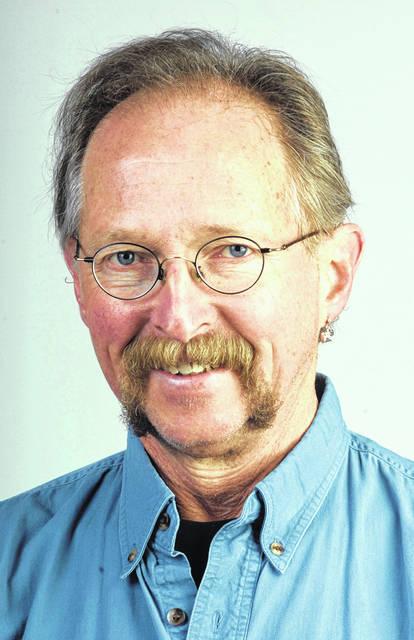It’s Friday afternoon, somewhere around 4 p.m. in early November. The air is cool, and the sky is blue. Variegated layers of clouds rest above the western horizon — an inviting day for a walk in the woods.
My brother, Ken, and I park at Hermon Woodlands Metro Park and head down the concrete walk to explore the obvious and lesser-known aspects of the preserve. All of a sudden I hear: “Oh look, hills!” It is Ken’s reaction to the grass-covered mounds to our left. I’m guessing they were formed by the soil that was excavated when the walk was built.
By the tone of his voice, I detect a hint of sarcastic joy. Why? Because in Ken’s travels from the rolling countryside of eastern Nebraska where our roots run deep, he is familiar with the flat landscape of west central Ohio. I’m surprised he didn’t climb to the apex of one of those mounds. But then, it would not have been the same sense of exhilaration he must have experienced when he was scaling mountains in Wyoming and Washington.
Ken and I are both students of nature and the world in general. The seeds of our curiosity were planted early and tended by our late father, Aelred Hugo. “Look at that!” “Learn to take an interest in things!” Since we would be walking in a forest populated by white and red oaks, one could say the acorns didn’t fall far from the tree.
My first visit to the park was in the summer of 2023 with my wife, Karen, when plants were in bloom and insects were feeding on the nectar. Robins, bluejays, cardinals and woodpeckers were among the avian species adding color to the palette.
For the Hugo brothers’ visit, it was a different scene. The mostly naked trees, once dressed in green, their leaves now carpeting the forest floor, were hard to miss as we traversed the trails of the undulating land. A tall shagbark hickory caught my attention. When my eyes began their journey, following the trunk to the highest branches, I saw the beauty. “Ken, look at the golden color of the leaves!”
When I looked for Ken, he was off trail, down near the stream — nosing around. Reading the landscape, we are together yet separate.
I pointed out some young beech trees with dried leaves still attached. I didn’t see a parent tree nearby but figured squirrels may have dropped beechnuts that eventually sprouted. I told Ken we would soon come upon a large beech and some of its young family members. With their smooth gray bark, beeches are often the target of inconsiderate visitors who carve hearts and initials in the bark.
“Ouch, dammit!” I turned and saw Ken studying one of his fingers. When I moved closer, I saw what caused his outburst: He got too friendly with what appeared to be a multiflora rose. Once planted as thick hedgerow fences, they are now verboten in Ohio as they are an invasive species. Some bird may have passed the seed, fertilizer included.
We noted rotting stumps, some quite large, that were playing an important role in the health of the forest. Food, shelter, perches for chipmunks. Were the stumps reminders of the timberman’s saw?
There were few critters to be seen, even though the lack of leaves gave us a clear view of the forest. A deer bounding away would have been a treat. We caught a glimpse of a male cardinal, our late mother Roslyn’s favorite bird. Maybe the squirrels spied us before we saw them.
My time on the trails of Hermon Woodlands reminded me of the early days of the Johnny Appleseed Metropolitan Park District, when I was its first naturalist from 1975 to 1980. The district was in its infancy, and the trails of McLean Teddy Bear and Heritage parks were the only spaces where I could share my knowledge with park visitors. Ah, the wonderful memories. The organization has come far and is a good steward of my tax dollars.
Ken and I, brothers in curiosity, are nearing the end of our venture. It has been too long since we read the landscape of someplace together. I stop and take a last look through the woodland to the western horizon.
The sun is nearly gone, and I am reminded of lyrics in the song, “Favorite Time of Light,” written by Linford Detweiler, who is one half of the band Over the Rhine with his wife, Karin Bergquist: “It’s our favorite time of light. Just before the day kisses the night.”
Phil Hugo lives in Lima. His column does not necessarily reflect the opinion of The Lima News editorial board or AIM Media, owner of The Lima News.







